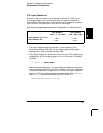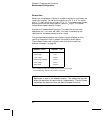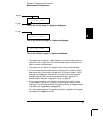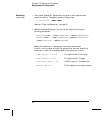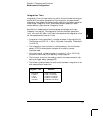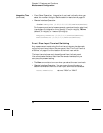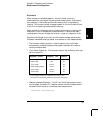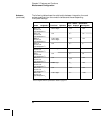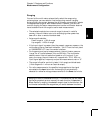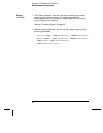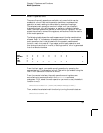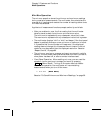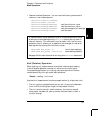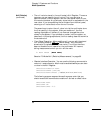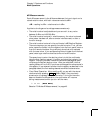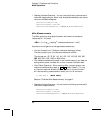
Ranging
You can let the multimeter automatically select the range using
autoranging or you can select a fixed range using manual ranging.
Autoranging is convenient because the multimeter automatically selects
the appropriate range for each measurement. However, you can use
manual ranging for faster measurements since the multimeter does not
have to determine which range to use for each measurement.
• The selected mode (auto or manual range) is stored in volatile
memory; the multimeter returns to autoranging when power has
been off or after a remote interface reset.
• Autorange thresholds:
Down range at <10% of range
Up range at >120% of range
• If the input signal is greater than the present range can measure, the
multimeter gives an overload indication: “
OVLD” from the front panel
or “9.90000000E+37” from the remote interface.
• For frequency and period measurements, the multimeter uses one
“range” for all inputs between 3 Hz and 300 kHz. The multimeter
determines an internal resolution based on a 3 Hz signal. If you
query the range, the multimeter will respond with “3 Hz”. With no
input signal applied, frequency and period measurements return “0”.
• The range is fixed for continuity tests (1 kΩ range) and diode tests
(1 Vdc range with 1 mA current source output).
• For ratio measurements, the specified range applies to the signal
connected to the
Input terminals. Autoranging is automatically
selected for reference voltage measurements on the
Sense terminals.
Ranging is local to the selected function. This means that you can select
the ranging method (auto or manual) for each function independently.
When manually ranging, the selected range is local to the function; the
multimeter remembers the range when you switch between functions.
3
Chapter 3 Features and Functions
Measurement Configuration
61



